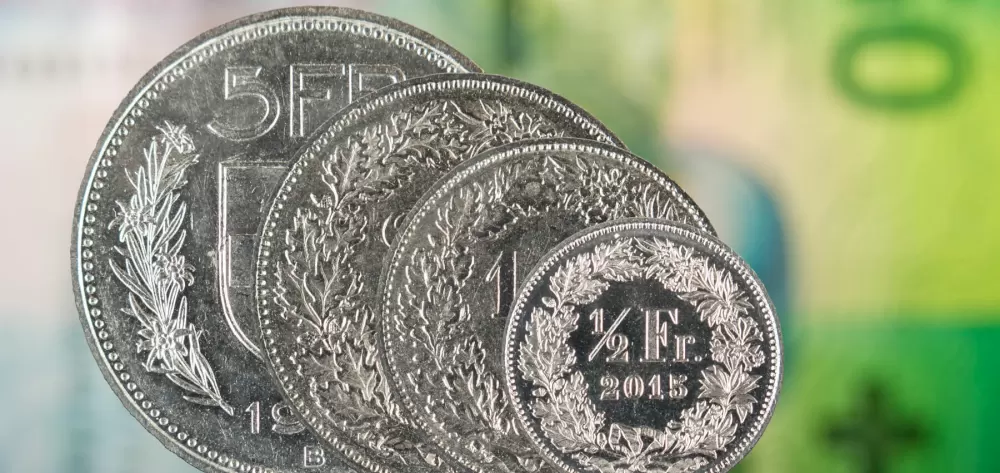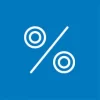Fixed deposits, term deposits and medium-term notes are alternatives to standard savings accounts. Here, we list the most important things to consider when choosing a fixed deposit, term deposit or medium-term note to invest in.
1. Compare interest rates
The interest rates of medium-term notes and fixed deposits are fixed – meaning they remain the same for the entire investment term. Interest is normally paid out on an annual basis.
Comparing interest rates is the most important step. Depending on the amount you want to invest and the investment term, you could earn hundreds or even thousands of Swiss francs more in interest by using the most favorable option as opposed to the least favorable.
Example: If you were to invest 100,000 Swiss francs in a fixed deposit or medium-term note with a 5-year term, an 0.5% difference in interest rates would result in your getting 2500 francs more or less interest.
2. Pay attention to costs
Many medium-term notes and fixed deposits have costs attached. Various fees may apply.
Many banks charge annual custodial fees for the safekeeping of medium-term notes. These fees are typically charged as a percentage of the invested money. Some banks charge minimum custodial fees.
Fixed deposits may also come with costs, such as account fees.
Comparing interest rates alone does not paint a complete picture of the yields you will earn because costs can also have a major impact. The interactive fixed deposit and medium-term note comparison on moneyland.ch automatically accounts for both costs and interest rates.
3. Medium-term note, fixed deposit or term deposit?
Medium-term notes are similar to bank bonds. They are securitized fixed deposits issued by banks. Like fixed deposits, they have fixed terms and fixed interest rates. Unlike savings accounts, the interest rates of which can change at any time, the interest rates of medium-term notes remain the same for the full investment term.
In addition to medium-term notes, some Swiss banks also offer term deposits. Term deposits have fixed terms and fixed annual interest rates. But unlike medium-term notes, they are bank accounts and not securities.
Swiss banks use the term fixed deposits somewhat differently to banks in other countries. In Switzerland, accounts marketed as fixed deposits typically have short terms (maximum one year) and unimpressive interest rates.
The moneyland.ch medium-term note and fixed deposit comparison clearly marks products as medium-term notes, term deposits or fixed deposits.
All three investment vehicles perform the same function: delivering interest at a fixed rate over a fixed term. Whether you use a medium-term note, term deposit or fixed deposit does not make much of a difference to you as the investor. The costs and interest rates are the most important criteria.
4. Choose the right investment term
Medium-term notes and term deposits normally have terms of 1 to 10 years.
As a general rule, the longer the term of a medium-term note or term deposit, the higher the annual interest rate is.
It is important to note that your money is “frozen” over the full investment term. You cannot withdraw your money until the end of the term. Once you tie up your capital in a long-term fixed investment, it will not be available to invest in other opportunities that may come up until the term expires.
Medium-term notes and term deposits are low-risk investments because interest is guaranteed and there is no risk of loss (barring bank failure). However, you bear an opportunity risk because your capital cannot be accessed when other more lucrative investment opportunities arise.
5. Choose the right investment amount
Typically, a minimum investment of 1000 francs is required when buying a medium-term note. Other require minimum investments as high as 5000 francs. The maximum investment size is often limited as well. Depending on the bank, you may not be able to invest more than 100,000, 500,000 or 1 million francs in a medium-term note.
Take time to consider how much money you want to invest in a fixed deposit instrument. Remember, you cannot access the money until the end of the fixed term, and tying up too much of your capital this way is not recommended. On the other hand, using a medium-term note or term deposit for investments under 1000 francs is hardly worth it.
6. Choose the right currency
Swiss medium-term notes and term deposits have long been offered in Swiss franc and euro denominations.
Interest rates for investments denominated by foreign currencies are often higher than those of fixed investments denominated by Swiss francs. However, you should consider the risk of the denominating currency losing value against the Swiss franc.
If you do not already hold money in the corresponding currency, you need to account for the currency exchange costs. Using low-cost currency exchange services (Wise, for example) can help reduce the cost of currency exchanges.
7. Understand the risks
Medium-term notes are not segregated assets. In the event of a bank failure, medium-term note principal is liquidated along with other bank assets. However, medium-term notes are covered by the Esisuisse bank depositor protection scheme up to a maximum of 100,000 francs per customer and bank.
Investing in foreign fixed deposits is riskier. Banks in European Union member countries are required to provide 100,000 euros of depositor protection per customer and bank. Banks in other countries may or may not be covered by depositor protection schemes, depending on local conventions and legal requirements in their host country.
8. Consider alternatives
Medium-term notes, fixed deposits and term deposits offer you as an investor the guarantee of earning interest at a pre-agreed rate over a long term. But depending on your needs, there are other solutions which may be more suitable, such as bonds, savings accounts and stocks. Each investment vehicle has unique advantages and disadvantages.
Savings accounts provide the same level of security that medium-term notes, fixed deposits and term deposits do, but have the advantage that you can withdraw your capital on relatively short notice. The disadvantage of savings accounts is that interest rates are typically lower, and banks can lower interest rates at any time on an ongoing basis.
Stocks and funds (like ETFs) offer an advantage in that they can potentially deliver higher returns than fixed deposit instruments. However, these investment vehicles also bear a high risk of loss, and thus require high risk tolerance and capacity. Investing in stocks and ETFs is best done using affordable online brokers.
More on this topic:
Compare Swiss medium-term notes, term deposits and fixed deposits now




